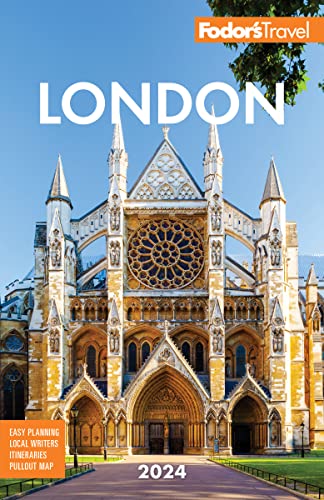Underground Travel: The Tube
London's extensive Underground train system (the Tube) has color-coded routes, clear signage, and many connections. Trains run out into the suburbs, and all stations are marked with the London Underground circular symbol. (Do not be confused by similar-looking signs reading "subway," which is British for "pedestrian underpass.") Trains are all one class; smoking isn't allowed on board or in the stations. There is also an Overground network serving the farther reaches of Inner London.
Some lines have multiple branches (Central, Circle, District, Northern, Metropolitan, and Piccadilly), so be sure to note which branch is needed for your particular destination. Do this by noting the end destination on the lighted sign on the platform, which also tells you how long you'll have to wait until the train arrives. Compare that with the end destination of the branch you want. When the two match, that's your train.
London is divided into six concentric zones (ask at Underground ticket booths for a map and booklet, which give details of the ticket options), so be sure to buy a ticket for the correct zone or you may be liable for an on-the-spot fine of £80. Don't panic if you do forget to buy a ticket for the right zone: just tell a station attendant that you need to buy an "extension" to your ticket. Although you're meant to do that in advance, if you're an out-of-towner, they generally don't give you a hard time. You also can pay your fare using an Oyster card or a contactless debit or credit card.
Oyster cards are "smart cards" that can be charged with a cash value and then used for discounted travel throughout the city. A Visitor Oyster card, which you must buy before arriving in the United Kingdom, costs £5. Normal Oyster cards also cost £5 and you can open an Oyster account online or pick up an Oyster card at any London Underground station, and then prepay any amount you wish for your expected travel while in the city. Each time you take the Tube or bus, you place the blue card on the yellow readers at the entrance and the amount of your fare is deducted.
Passengers using Oyster cards pay lower rates. For one-way Tube fares paid in cash, a flat £4.90 price per journey now applies across all central zones (1–2), whether you're traveling 1 stop or 12. However, the corresponding Oyster card fare is £2.40 off-peak, £2.90 peak. One-day Travelcards used to be a good value for the money, but now, costing from £12.70 per card, they're a much less attractive option. If you're planning several trips in one day, it's much cheaper to buy an Oyster card: because of the system's daily "cap," you can make as many journeys as you want in Zones 1–2 for just £7 (or, in Zones 1–3 for £8.20). If you're going to be in town for several days, a seven-day Travelcard gives you the same value as an Oyster card (£35.10 for Zones 1–2, £64.20 for Zones 1–6). Children aged 11–15 can travel at discounted rates on the Tube and travel free on buses and trams with an Oyster photocard (must be ordered online at least four weeks before date of travel), while those under 11 travel free on all buses, and on the Tube if accompanied by an adult or with an Oyster photocard. Young people aged 16–18 and students over 18 get discounted Tube fares with an Oyster photocard. Oyster card Tube fares start at £2 and go up depending on the number of zones you're covering, the time of day, and whether you're traveling into Zone 1.
However, although Oyster cards sound like the way of the future, they will soon be a thing of the past. Moves are underway to gradually phase out Oyster cards and to encourage passengers to move to a system of direct payments using their bank debit or credit cards instead. In practice, this means swiping a "contactless" bank card instead of your Oyster card at ticket barriers. The cheaper fares available to Oyster card holders are the same as those who pay by contactless cards.
Tube trains now run for 24 hours a day on weekends on five major lines: Piccadilly, Victoria, Northern, Central, and Jubilee. On all other lines the usual timetable still applies, with trains running from just after 5 am Monday to Saturday, and with the last services leaving central London between midnight and 12:30 am. On Sunday, trains start an hour later and finish about an hour earlier. The frequency of trains depends on the route and the time of day, but normally you should not have to wait more than 10 minutes in central areas.
There are TfL Travel Information Centres at the following Tube stations and travel locations: Liverpool Street, King's Cross and Victoria (Monday–Sunday 9 am–5 pm); Piccadilly Circus and Paddington (9:30 am–4 pm); Gatwick Airport, North & South terminals (8 am–4 pm); and at Heathrow Airport, Terminals 2 and 3 and Underground stations (8 am–6pm).
Important note: you need to have your ticket (Oyster card, Travelcard, regular ticket, or contactless debit/credit card) handy in order to exit the turnstiles of the Tube system, not just to enter them.




